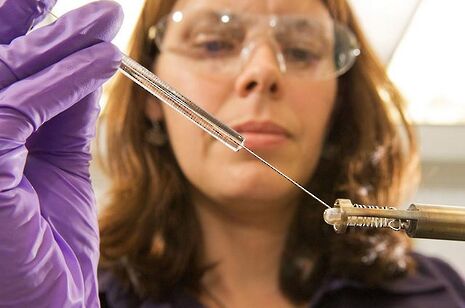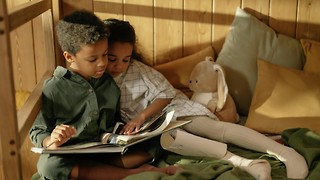The ‘leaky pipeline’ of women in science
Devina Shah explores why the number of women in science dramatically drops above undergraduate level

The gender disparity in academic science – and science, technology, engineering and maths (STEM) professions as a whole – is a topic close to my heart, as a Natural Sciences student hoping to progress into academic research in the future. At my all-girls secondary school, I can say that I was never fully aware of the extent of this issue – our gender wasn’t even considered when we were encouraged to follow our budding interests in science.
But here in Cambridge, the source of this disparity is a matter discussed widely, one that nearly everyone seems to have an at least half-formed opinion on – and for good reason. The Higher Education and Skills Agency found that in the year 2013/14, 52 per cent of male undergraduates were enrolled on a science course, compared with only 40 per cent of females.
Of late, there has been a growing drive to encourage girls to become involved in science, and lobbying of this nature is a key approach to the problem. But in biological and medical fields, women have outnumbered men at the undergraduate level for a long while – and yet have still been unable to reach professorial levels in similar numbers.
Across every scientific discipline, the proportion of women on track to become leading researchers falls significantly with every step of career progression – this phenomenon is known as the ‘leaky pipeline’.
So while it is important to keep attracting young women to the sciences, this is far from enough – the problem lies not only in recruiting, but also in retaining them. A 2014 select committee on women in scientific careers reported that they are under-represented at professorial levels across all STEM disciplines – typically only 17 per cent of professors are female. So how does such a stark disparity come about?
One explanation for this ‘leaky pipeline’ is that having a family can force female scientists to sacrifice their careers – or at least slow down their progression. While it is easy to say that women should not have to choose between having families and careers, in practice there have not been support systems in place for women in the laboratory.
The most significant drop in women scientists has been found to happen at the postdoctoral level, so the recent shared parental leave law is encouraging. It should help make childcare more gender-equal and hopefully reduce this problem.
We are constantly informed that times are changing, that there are more successful women than ever before in scientific fields – so why don’t we see them? Their visibility continues to be diminished at conferences, outreach programmes and even in lecture theatres. I can recall courses in my first-year here that were lectured exclusively by men.
The value of role models should not be underestimated. In my experience, telling young women what they can achieve is not nearly as effective as giving them examples of other women fulfilling their potentials. We aspire to what we can see, and here a vicious circle has become established for women in science.
This lack of confidence in one’s own abilities has also been proposed as a cause of the ‘leaky pipeline’. But if the overwhelming majority of interactions that young female scientists are having with potential role model figures are with men, of course it can become difficult to imagine oneself ever reaching that position.
Where women have to persevere to establish successful research careers, it is vital that we support them into teaching and outreach positions, so that they can show the next generation of young women that they are also capable of great achievements.
As a community, we may claim to have overcome the archaic stereotypes of women being less capable at ‘hard science’ by expressly encouraging their interest through access schemes – but more covert discrimination is still rife.
In a recent study, faculty members were found to rate male applicants “more competent and hireable” than their identical female counterparts. Gender bias and even misogynistic lab culture are not just things of the past, but very real problems faced by women in STEM professions today.
This makes it crucial that these women are provided with spaces, especially by employers, where they are able to discuss their experiences openly and develop the tools that they need to combat unfair practices.
The issue here cannot be solved by simply telling young women that they can be successful in science, but through creating a system that enables them to do so – something I believe my secondary school had achieved, if on a small scale.
But in the wider world the crux of the matter is that hiring procedures, tenure and grant-allocating processes all contribute to making academic science institutionally sexist, and until this is addressed the statistics are likely to remain a disheartening sight.
Various research has suggested that a higher level of social diversity of all types within a group correlates with greater innovation – and so it is not only people that stand to benefit from equal opportunity, but science itself.
 News / Uni offers students £55k in payouts31 October 2025
News / Uni offers students £55k in payouts31 October 2025 News / Students launch women’s society excluding trans women31 October 2025
News / Students launch women’s society excluding trans women31 October 2025 News / College rowing captains narrowly vote to exclude trans women31 October 2025
News / College rowing captains narrowly vote to exclude trans women31 October 2025 News / Uni error forces deeper spending cuts31 October 2025
News / Uni error forces deeper spending cuts31 October 2025 News / Cambridge launches plan to bridge ‘town and gown’ divide27 October 2025
News / Cambridge launches plan to bridge ‘town and gown’ divide27 October 2025









